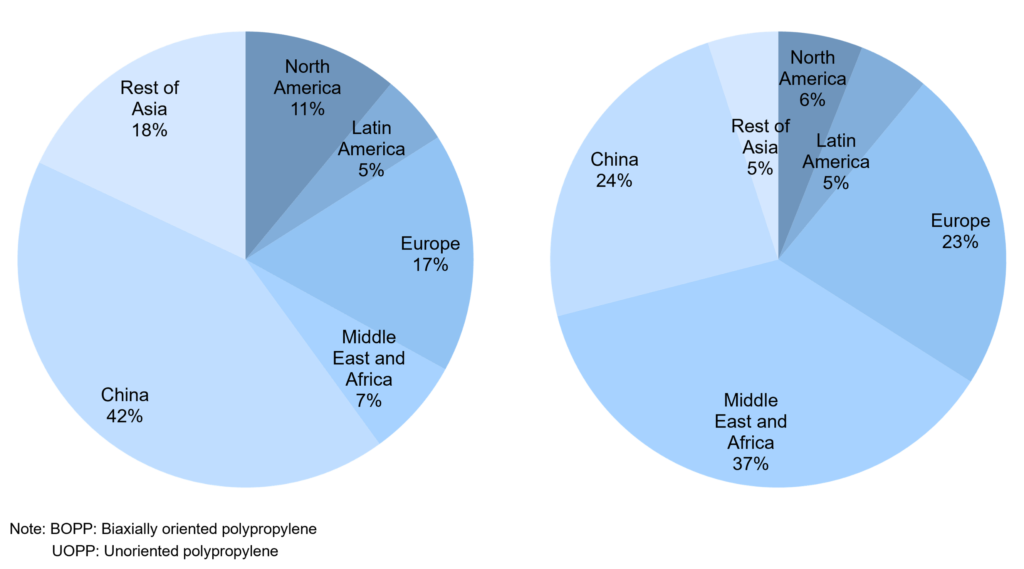Polypropylene Film Technologies
Polypropylene (PP) is a thermoplastic linear hydrocarbon polymer produced from its monomer, propylene, using a chain-growth polymerization process catalyzed by either Ziegler-Natta or metallocene catalysts. PP films are versatile and cost-effective barrier films that are used in various packaging and non-packaging applications. PP films are extensively used in applications requiring barrier properties, clarity, gloss, strength, printability, embossability, aroma resistance, and dimensional stability. PP films are classified into unoriented PP films (UOPP) and biaxially-oriented PP films (BOPP). Improvements in PP resin grades, equipment performance, and processing capabilities have narrowed the gap in quality between UOPP and BOPP films.
Market Drivers and Major Players in the Global Polypropylene Films Market
Markets of PP films are changing rapidly. PP had been growing and taking market share from other plastic films, but trends towards recyclability have caused some shifts away from complex, multi-layer structures to all-polyethylene package structures or, in some cases, non-polymer packages. PP films compete with other polymer films (PVDC, polyester, nylon, polyethylene, cellulose) as well as waxed paper, aluminum foil, and others on a cost and performance basis. Flexible packaging in general continues to grow, driven by developing markets, and BOPP film has continued to show robust growth. Emerging markets in Asia continue to grow and attract investment. The Middle East, Eastern Europe, and South America are also expected to witness significant growth. The mature markets of North America, Western Europe, and Japan will experience modest growth. The EU’s packaging waste directive is expected to displace some of the virgin PP demand with recycled PP demand over the medium term. Markets that do not require the balanced strength that BOPP offers (e.g., flower wrap, cosmetic overwrap, candy packaging, medical pouches) are finding UOPP an attractive alternative. UOPP has recently grown faster than BOPP even in Europe. There is tremendous opportunity for growth in emerging markets like India. Less initial investment, more flexibility in producing shorter runs of material for customers, less downtime, and easier handling compared to BOPP combined with use of wider dies for higher gloss and haze levels has made UOPP more competitive, with the trend expected to continue in several niche applications (like the rapidly growing healthcare industry) in the future. Exhibit below shows breakdown of global PP film demand by region in 2014.

Exhibit 1. Global BOPP films (on left) and UOPP films (on right) demand by region in 2014 in percentage.
Polypropylene Film Market Assessment
ADI Chemical Market Resources (ADI CMR) has conducted a strategic analysis of current market dynamics and overview of industry growth drivers, with global and regional demand analysis forecast over the next five, 10, and 20 years. The report is based on thorough analysis of the industry through detailed interviews with all the major players including PP producers and end-users. The geographic focus of the market assessment will be regions segmented into North America, Latin (Central and South) America, Europe, Middle East and Africa, Japan, China, and Rest of Asia. The report will benefit present and future PP film market participants; PP producers; and individual end-users, entrepreneurs, and organizations attempting to understand the complex market and capture future growth.
Table of Contents
Click here to view the table of contents for this report.
Prospectus
Please fill this form and check your email for a link to download the prospectus. For a custom report on a topic of your choice or an updated version of an existing report, please contact us at +1 (281) 506-8234 or info@adi-cmr.com.


